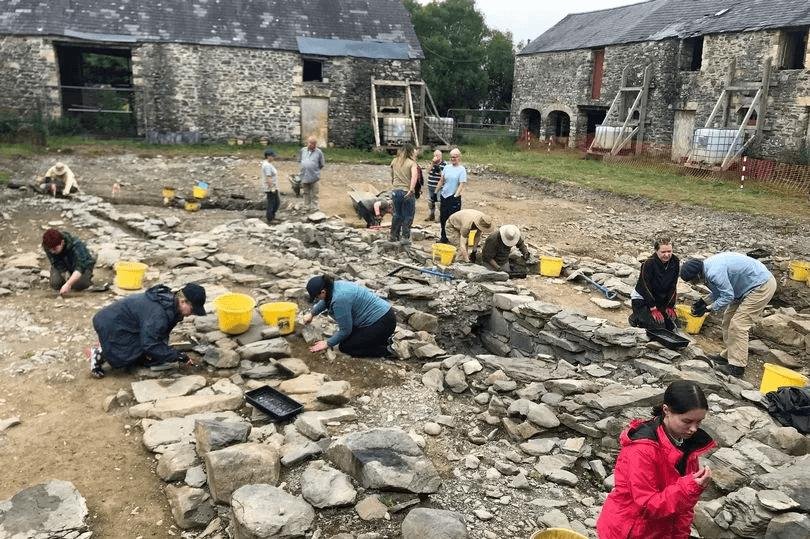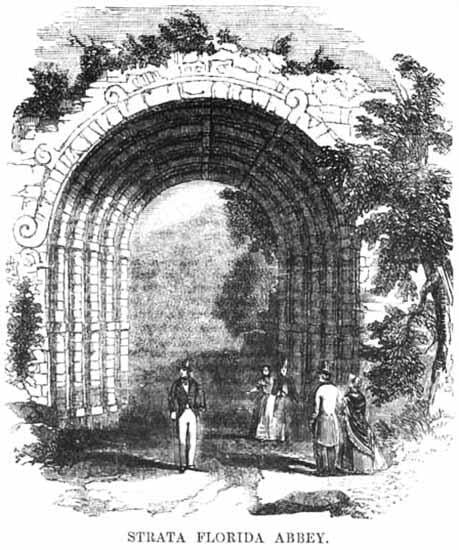Archaeologists in Wales have unearthed an ancient Celtic monastery beneath the grounds of a 12th-century Cistercian abbey.
 Excavations by the Strata Florida Trust Archeology Field School have begun to unearth the abbey’s pre-Cistercian history. Credit: Strata Florida Trust
Excavations by the Strata Florida Trust Archeology Field School have begun to unearth the abbey’s pre-Cistercian history. Credit: Strata Florida Trust
The site in question, Strata Florida Abbey, known as “Valley of Flowers” in Latin, holds immense historical and spiritual significance within the Welsh landscape. Situated in the heart of western Wales near the Cambrian Mountains and the village of Pontrhydfendigaid, Strata Florida Abbey was once a prominent Cistercian monastery.
The excavation efforts, which began two decades ago, initially focused on analyzing landscapes and field structures. However, recent attention has turned to the courtyard of Mynachlog Fawr Farm adjacent to the abbey. Within this area, archaeologists have uncovered compelling evidence of ancient structures, including a substantial aqueduct and medieval buildings believed to have been part of the abbey.
Of particular interest is a stone building that appears to predate the establishment of the Cistercian abbey in 1184. Radiocarbon dating of charcoal samples collected from medieval buildings revealed dates ranging from the 11th to the 13th centuries, suggesting the presence of structures predating the abbey’s foundation.
 The abbey’s decorated west doorway. Credit: Peter Broster/Wiki Commons
The abbey’s decorated west doorway. Credit: Peter Broster/Wiki Commons
Carys Aldous-Hughes, director of the local trust, overseeing the excavation, remarked on the significance of these findings, stating, “The dates from the earlier building seem to suggest that it is pre-Cistercian in date.” She emphasized that upcoming excavations in 2024 will focus on further examining this building to uncover its original floors and functions.
Known locally as Ystrad Fflur, Strata Florida Abbey was established by Cistercian monks in the Cambrian Mountains near Pontrhydfendigaid, Ceredigion. Over time, it became one of Wales’s most renowned churches, second only to St Davids, serving as a place of pilgrimage and the final resting place for esteemed poets and Welsh princes.
Recent discoveries include the identification of a large stone-lined channel believed to be an aqueduct supplying water to the abbey complex from a nearby river. This aqueduct, operated solely through gravity, highlighting the sophisticated engineering of the medieval period.
 The remains of Strata Florida Abbey as depicted in the 1851 Illustrated London Reading Book. Credit: Wiki Commons
The remains of Strata Florida Abbey as depicted in the 1851 Illustrated London Reading Book. Credit: Wiki Commons
In addition to ongoing excavations, the Strata Florida Trust is undertaking restoration efforts at Mynachlog Fawr Farmhouse and buildings, while also hosting educational exhibitions and field school programs.
This summer, from June 17 to July 14, the Archaeology Field School will resume its activities, offering courses and digger-day experiences to interested participants, including bursaries for local residents and students.





